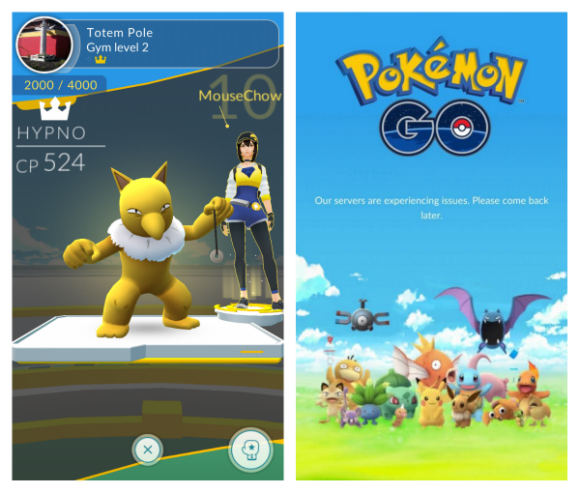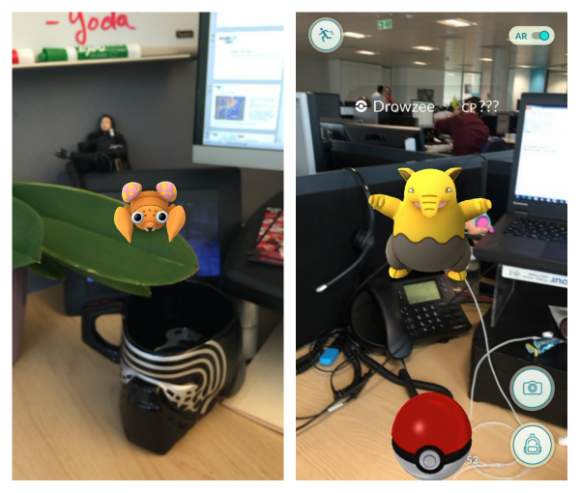I’ll admit it, I’m hooked.
And no, I’m not a Millennial with fond memories of Saturday mornings watching Ash Ketchum and gang. I have a teenager who has loved Pokémon since she was old enough to count hit points, and we’re having a blast playing Pokémon Go together and comparing our Pokédexes.
Even if you’re not playing, there’s no way you could have missed the media storm that is Pokémon Go. It’s a truly worldwide phenomenon, and is quickly changing the way that we interact with our phones and the world. Augmented reality apps have been around for a while, but nothing has changed the game like Pokémon Go. So as I’m sitting at my desk, burning virtual incense to attract Pokémon, a few things have occurred to me that relate to actual work.

Pokémon Go lesson #1: Good content is like Incense – those elusive very rare buyers will actually seek you out.
Everyone likes fun content, even when they’re at work. Hey, we’re all busy. Sometimes, we’re so busy that we forget to stop and have fun, so distractions, especially when they help you do your job better, can be a very welcome thing. How many B2B emails were in your inbox this morning? And how many did you actually click on? The ones that get attention are either a) super, super relevant and timely, or b) humorous and offer a chance for some levity. Those bottom-funnel, highly targeted communications that you’re sending are probably working pretty well, because they’re relevant. But how are your top-funnel, “attract” communications doing? If you’re not already using humorous or provocative content, it’s time to test something new. And it’s important to remember – incense is great, but sometimes you have to go out and actually find the Pokémon (or your buyers) where they are.
Pokémon Go lesson #2: People will hand over their information for the promise of a great experience.
When Pokémon Go first launched, reports immediately started popping up about the brazenly broad amount of personal information that was required for logging in. Niantic, the makers of Pokémon, gained access to just about everything about their users except for blood type and boxers vs. briefs (they’ve since backed off). Did that stop millions of people from signing up immediately? Nope. Setting up “gates” by putting forms in front of your best, most compelling content, is truly OK. It helps B2B marketers to convert unknown visitors to known contacts, and provides an opportunity to score those contacts through their digital body language and interaction with your high-value content, whether it’s gated or not. But make sure that the content you provide after the gate is truly worthy of the information provided, or you will lose trust. If you’ve created irresistible, got-to-have-it content that can’t be found elsewhere, gating is no problem.
Pokémon Go lesson #3: People are social and actually like talking with other people about topics that excite them.
The virality of Pokémon Go has been unstoppable, in part because it creates real-world social interactions. Take a walk down to your local park, and you’ll see what I mean. Rather than the “zombies” walking around staring at their phones that have been described on social media, for those playing the experience is very different. People who don’t know each other are working together as teams to battle gyms, and actually talking with each other to coordinate attacks. Players are giving fellow players tips as they pass on the street. How can you harness that power for your product or service? What are you doing that gets your customers and prospects so excited that they want to share? And what are you doing to foster those interactions? Local user groups and meet-ups can be a great way to bring your best customers together with prospects. Your advocates will be your best sales people, because nothing sells like hearing from peers that have the same challenges. If your customer community is primarily online, can you create a virtual experience that simulates that face-to-face interaction? Give your loyal customers a reason to be proud of their relationship with your company, product, or service, and they will become your most effective marketing channel.
Pokémon Go lesson #4: Games are fun.
Who doesn’t enjoy feeling like they’re winning? Gamification can make learning a new skill or piece of software both fun and rewarding. And, it gives people a reason to share their achievements. Can you create an experience that helps your prospects or customers feel rewarded while they’re engaging with your company or content? A game that educates prospects about your service, while being fun and sharable, is a great way to juice up your “attract” content. Or, if your product is reliant on continual usage for your customers to get the most out of it, find a way to reward them for ongoing engagement. They’ll have fun, possibly become more loyal, and it will give them a reason to share.

Pokémon Go lesson #5: When you promise an experience, make sure you deliver.
The struggle is real: overloaded servers, inability to create accounts, and an app that hangs just when you’ve caught that Vulpix that took 6 Pokéballs to catch. It’s almost enough to make me want to stop playing. Now imagine that you publish a new piece of cool content – that game that is going to keep your prospects engaged, or your new video that took months to produce. You’ve paid for media, and emailed your entire database, and then you realize that the landing page just won’t load. Or, you link your communications to a page where the new content you’ve promoted is buried in a link somewhere, or sitting below the fold. All of your hard work, and the excitement you’ve built in your prospects, has just been squandered. Marketing snafus will happen – it’s inevitable, but you can mitigate some of the risk with a couple of key steps. Run a few regular people (or some that represent your target prospects) through the process of accessing your content or offer or trial or whatever. Take note: where do they get stuck? Do they understand what they’re supposed to do? Iterate the online experience until it’s easy and “just works”. And perform load testing. Will your site, app, video, etc. stand up to the traffic that you’ll be sending? Do you need to throttle your rollout? Be sure that when you do finally get that awesome prospect in your sights, they stick around so that you can capture them.
Because that’s the object of the game – Gotta Catch’Em All.


